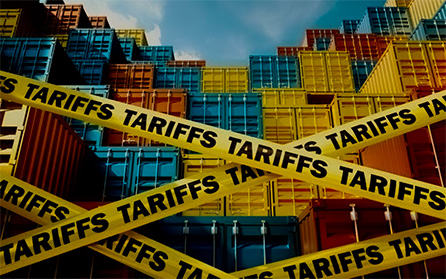The so-called “reciprocal tariffs” introduced by former US President Donald Trump have stirred global debate over fairness and sustainability. While branded as reciprocal, many experts argue these measures are largely unilateral, imposed without multilateral consultation or adherence to global trade norms.
Trump’s tariff strategy leaned heavily on the US’s economic clout. Instead of engaging in cooperative trade reforms, he pushed partner nations to accept deals on his terms. The result: while many countries offered duty-free access to American goods, their own exports continued to face significant US tariffs — a one-sided arrangement masked as reciprocity.
Take Bangladesh, for example. While it allows zero-duty entry for numerous US products, its own exports — particularly garments — are still taxed upon entry into the US. This pattern is echoed across several developing economies.
Critics argue Trump’s approach undermines the World Trade Organization (WTO), which was built to ensure fair trade and equitable global wealth distribution. Before his measures, the average US tariff rate stood just over 2%. Under Trump, it surged to nearly 15%, aligning with global averages but dismantling decades of liberal trade policy.
From ‘Aid’ to ‘Trade’ — But On Whose Terms?
Soon after taking office, Trump suspended major USAID operations, declaring his belief in “trade, not aid.” However, instead of fostering open trade, he slapped steep tariffs on allies and adversaries alike, inviting them to renegotiate trade deals — on America’s terms.
China was a primary target, with tariffs as high as 145% imposed to curb its growing global dominance. Trump also levied a 35% tariff on Bangladeshi goods, reportedly due to the country’s reliance on Chinese inputs.
Using national security as justification, Trump invoked the International Emergency Economic Powers Act (IEEPA), declaring America’s trade imbalance a national emergency. The White House stated that chronic trade deficits had “hollowed out” US manufacturing, weakened critical supply chains, and increased dependence on foreign adversaries.
Behind the Policy: Strategic Revival or Political Optics?
The reciprocal tariff strategy was reportedly shaped by Trump confidants: hedge fund manager Scott Bessent, businessman Howard Lutnick, and trade adviser Peter Navarro. Their aim? Reshoring key industries like semiconductors and microchips, reducing dependence on foreign supply chains, and reviving domestic manufacturing.
Yet experts warn that this vision faces structural challenges. The US lacks the low-cost labor force to support industries like garment manufacturing. Meanwhile, establishing advanced tech sectors requires years of investment, training, and infrastructure — none of which can be fast-tracked.
The Verdict: A Costly Gamble?
While the MAGA-driven tariff policy may appeal to domestic political sentiments, economists caution it could raise consumer prices, shrink trade volumes, and stoke inflation. In trying to protect American industry, the US may be isolating itself from the very global system that once propelled its economic dominance.
In the long run, Trump’s so-called reciprocal tariffs may prove neither reciprocal nor sustainable.






